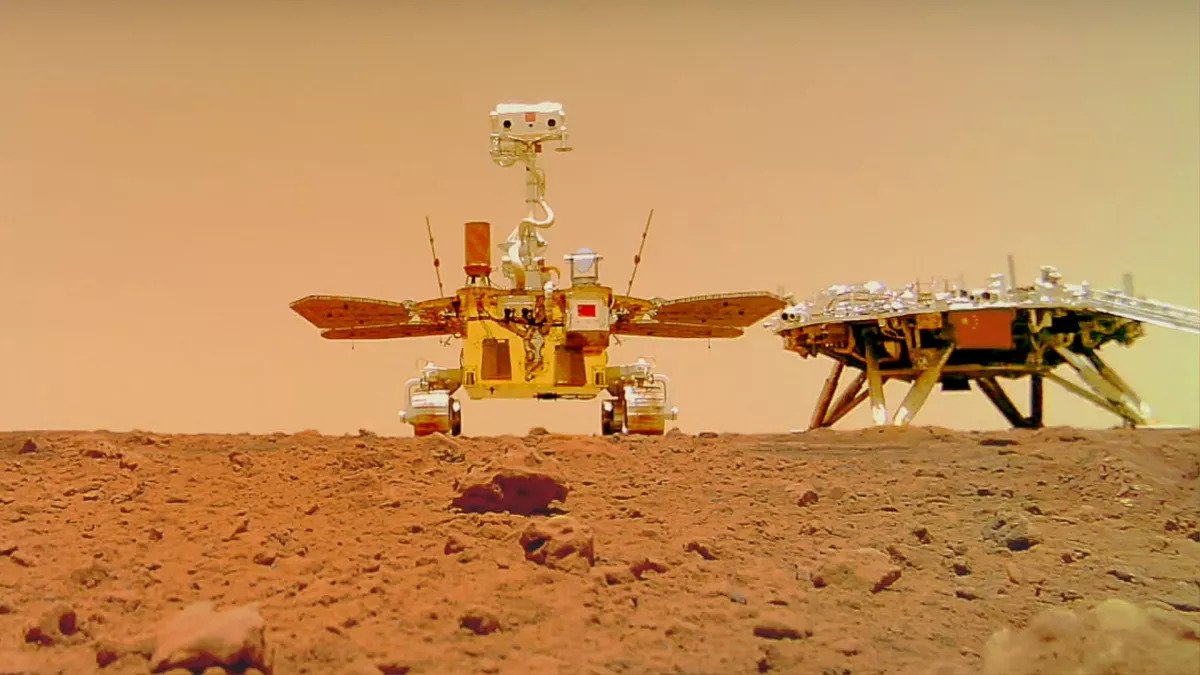China’s Zhurong rover has not moved for many months, although scientists continue to make discoveries thanks to it. Recently, they discovered craters covered with sand under the surface of the red planet.

Zhurong on Mars
The Chinese rover Zhurong arrived on the surface of the red planet in 2020. In May 2022, it entered a safe mode in anticipation of winter, which should come in the Northern Hemisphere of the planet. It was supposed to get out of it in December, but the Chinese authorities did not inform about it.
It is obvious that the rover is silent, but Chinese scientists do not comment on this in any way. Recently, the Mars Reconnaissance Orbiter took a picture of Zhurong, which showed that the rover had not moved since it “fell asleep”.
What happens to it is unknown, but Chinese scientists continue to publish scientific discoveries made by this robot. Recently, a paper was published describing the structure of the soil layers at the landing site of the rover. It contains a curious discovery.
Hidden craters
Zhurong is equipped with a ground-penetrating radar capable of operating in two frequency bands. The first of them allows to “look” to a depth of up to 4.5 meters, and the second — at a target of 80. Usually this ability is used to search for water under the surface.
This time it found rocks, but they were very interesting. Deep under the surface of the red planet there were impact craters and some other inclined structures, and this discovery puzzled scientists a lot, although there was nothing incredible about it.
The fact is that until now scientists have dealt with loose soil only on the Moon. It was ground by millions of years of micrometeorite impacts. Therefore, it lies in smooth layers of shallow depth. And then it turns out that on Mars, the sand can be so deep that ancient craters hide under it.
The reason for this, of course, is the Martian atmosphere. No matter how thin it is, it still reliably protects the surface from micrometeorites. But there is wind and water once flowed, which means the presence of erosion.
But the crater that the Zhurong rover discovered was filled in shortly after it was formed. And the layers of sand protected it from erosion. Now such places are a kind of window into the geological past of the planet.
According to www.space.com
Follow us on Twitter to get the most interesting space news in time
https://twitter.com/ust_magazine

